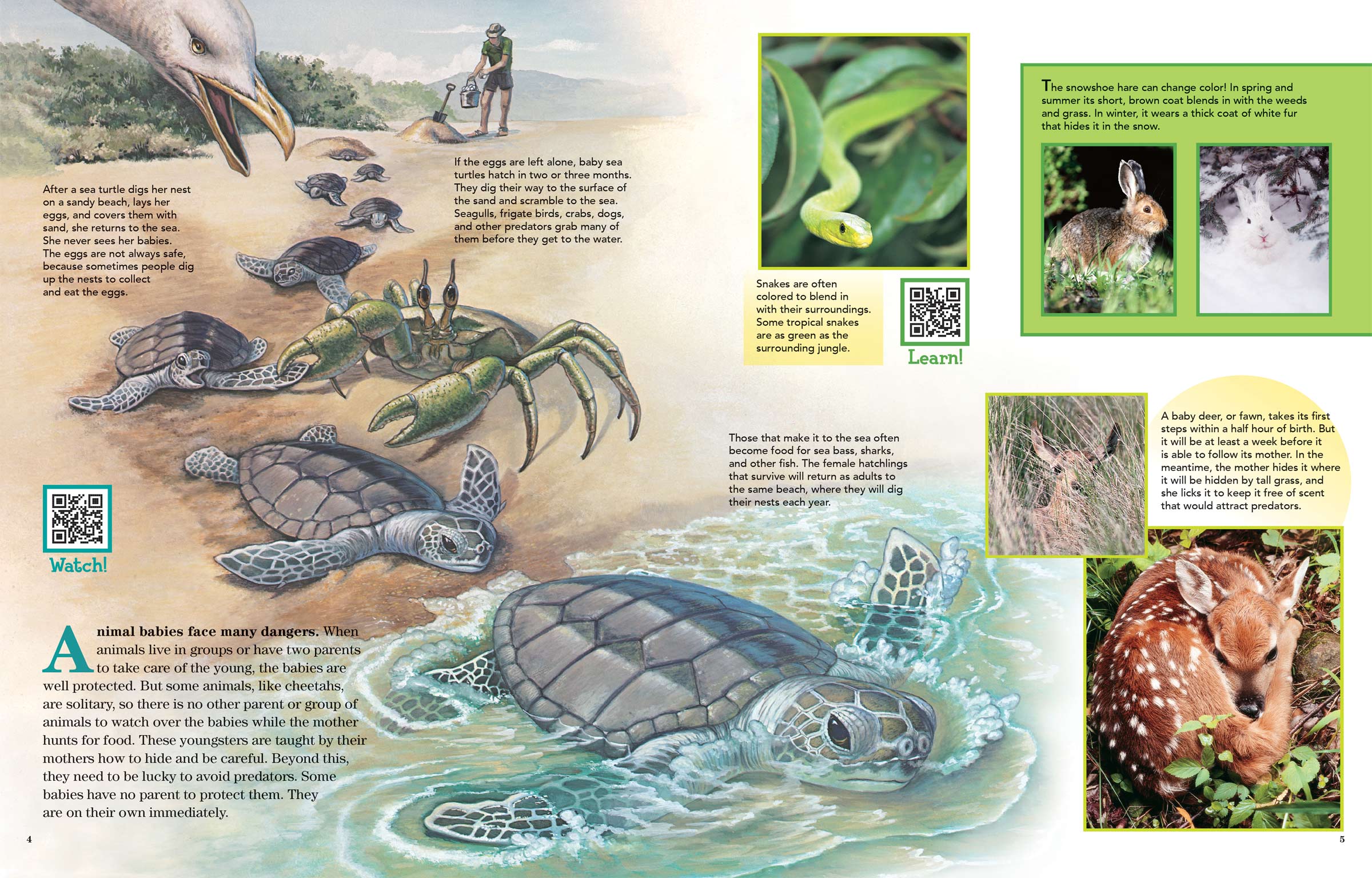
Facing Danger
ByAnimal babies face many dangers. When animals live in groups or have two parents to take care of the young, the babies are well protected. But some animals, like cheetahs, are solitary, so there is no other parent or group of animals to watch over the babies while the mother hunts for food. These youngsters are taught by their mothers how to hide and be careful. Beyond this, they need to be lucky to avoid predators. Some babies have no parent to protect them. They are on their own immediately.
After a sea turtle digs her nest on a sandy beach, lays her eggs, and covers them with sand, she returns to the sea. She never sees her babies. The eggs are not always safe, because sometimes people dig up the nests to collect and eat the eggs.
If the eggs are left alone, baby sea turtles hatch in two or three months. They dig their way to the surface of the sand and scramble to the sea.  Seagulls, frigate birds, crabs, dogs, and other predators grab many of them before they get to the water.
Seagulls, frigate birds, crabs, dogs, and other predators grab many of them before they get to the water.
Those that make it to the sea often become food for sea bass, sharks, and other fish. The female hatchlings that survive will return as adults to the same beach, where they will dig their nests each year.
Snakes are often colored to blend in with their surroundings. Some tropical snakes are as green as the surrounding jungle.
The snowshoe hare can change color! In spring and summer its short, brown coat blends in with the weeds and grass. In winter, it wears a thick coat of white fur that hides it in the snow.
A baby deer, or fawn, takes its first steps within a half hour of birth. But it will be at least a week before it is able to follow its mother. In the meantime, the mother hides it where it will be hidden by tall grass, and she licks it to keep it free of scent that would attract predators.

